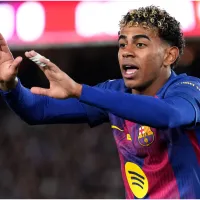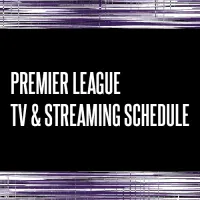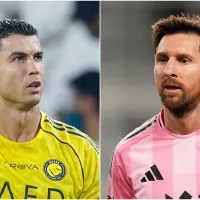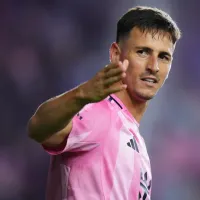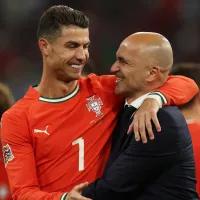If the United States had not hosted the 1994 World Cup, America might still be in the Stone Age, soccer-wise. With the Brazil 2014 World Cup imminent and the comprehensive ESPN presentation of the tournament that viewers in the U.S. are about to enjoy, it’s easy to forget just how much American TV soccer coverage has evolved since the pivotal 1994 World Cup.
World Cup USA ’94 was unforgettable for numerous reasons but the memory that looms largest in my mind is attending the first-ever World Cup match on home soil for the U.S. Men’s National Team, against Switzerland, at the Silverdome in Detroit, Michigan.I don’t know how my parents procured World Cup tickets for our family in that pre-widespread-Internet-era, but I’ll always be grateful they did. From our marathon road trip to Michigan, to the bus ride from our hotel to the stadium with cowbell-toting Swiss fans, to Eric Wynalda’s electric tying goal, those World Cup memories are truly special. But as meaningful as that experience was to me as a 17-year-old, I couldn’t imagine the impact it would ultimately have in reshaping the American soccer landscape.
Since this month marks the 20th anniversary of that magical World Cup month, I thought it would be fun to dig up my original VHS recording of the ’94 U.S./Switzerland match, which I haven’t watched in its entirety since I was actually sitting in the Silverdome stands nearly two decades ago. I thought correctly – boy was it ever fun to revisit…
My first impression upon starting the tape is that TV soccer coverage has come an unbelievably long way in the past 20 years. ABC didn’t have any sort of pre-game show (or if they did it wasn’t carried on my local ABC affiliate). They didn’t show the teams walk out onto the field or bother with national anthems. Just an aerial shot of the Silverdome, a brief shot of a few U.S. players filing past the camera, then a cut to host Jim McKay in the studio:
“Will it [World Cup USA ‘94] be a turning point, or just a footnote in the history of American sport?” asked McKay. He briefly explained the global bigness of the World Cup tournament before mentioning the U.S. team. “For the Americans, their first match today against Switzerland is critical to their chances to advance. They’re underdogs – maybe not quite as much as the 1980 U.S. hockey team, but pretty close.”
Following the extremely brief McKay intro, it was commercial time. Remember, they didn’t want to waste a nanosecond of potential ad time since they were trying out the newfangled approach (new to the U.S. at least) of airing the actual match without commercial interruption. I ate up all the vintage commercials. Since the same ads from the tournament’s largest sponsors (Canon, Coca-Cola, FujiFilm, Gillette, GMC, MasterCard, McDonald’s, etc.) ran constantly throughout the tournament, I practically memorized them back in 1994. Seeing many of them again was a nostalgic rush. One of my favorites was the Powerade ad featuring NFL star Deion Sanders:
“What’s the next thing, Deion?” asks a narrator.
Deion (to the camera): “Soccer anyone?”
Skillful soccer play breaks out around Deion, but he can’t get the ball, so he finally intercepts it with his hands and takes off running. The referee blows his whistle and produces a yellow card. Deion snatches the card, grabs the ref’s pen and autographs the yellow card, flashing his grin at the camera and quipping, “Must be a fan.”
Deion takes a Powerade break with the goalkeeper, presumably because he’s the only player on the field Deion could relate to since they both use their hands. After the rehydration, Deion sprints back onto the field, looking ready to abide by the laws of the game this time. A long ball floats his way and he heads it. Deion looks at the camera a final time and says, “I should’ve brought my helmet.”
ABC’s match commentators were Seamus Malin and Roger Twibell. There were no onscreen lineups. No bench shots. No pregame sound bites from the coaches. Just straight to kickoff. Twibell thanked the roll of sponsors for bringing the match to us commercial-free, then explained that the clock in the upper left corner of the screen would count up to 45. Yes, he actually explained that.
Eventually, Twibell got around to announcing the starters, though there was still no onscreen graphic to indicate anything like a formation. The U.S. starting eleven were: Tony Meola, Cle Kooiman, Alexi Lalas, Marcelo Balboa, Paul Caligiuri, Mike Sorber, Tab Ramos, John Harkes, Thomas Dooley, Eric Wynalda, and Ernie Stewart.
By today’s standards, Malin and Twibell over-explained everything. Three minutes in, for example, Ernie Stewart was called offside, so Malin explained how being offside works. A minute later, he explained the rule on back-passes to the goalkeeper. Twenty minutes later, Twibell said, “And Seamus, if you accumulate two yellow cards in the game, you’re out.”
“That’s right,” confirmed Malin.
What would we have done without those guys?
One of the many quirks of the broadcast was the number of interviews ABC sprinkled in during the match. In the middle of the action ABC inserted a little window onscreen with a player’s talking head expounding on everything from speed (Stewart), to goal celebrations (Wynalda), to dealing with distractions (Lalas). I suppose it was ABC’s attempt to acquaint us with players who were virtual unknowns. But it was still weird.
In the 39th minute, Thomas Dooley riskily tackled Switzerland’s best player (Alain Sutter) from behind. Georges Bregy’s ensuing free kick from just outside the box sailed past Meola into the upper right corner for a goal. Meola’s positioning wasn’t ideal – he left way too much open net to his left.
Five minutes later, John Harkes made a sharp penetrating run toward the middle of the field, beating two players before he was brought down several yards outside the top of the box. Eric Wynalda stepped up to take the free kick. ABC almost missed him taking it (something they struggled with throughout the broadcast, lingering on replays while something new developed on-field). He didn’t take a long run up, just a couple quick steps, then lofted a long, pinpoint shot to the upper left corner that tucked just under the crossbar. I’m sure the crowd’s explosive roar has grown louder in my mind over the years, but it was indeed one of those unique World Cup joy-eruptions that television can’t fully replicate.
During halftime, another commercial I’d forgotten about – the Tab Ramos Snickers ad. Over indoor shots of Tab dribbling, juggling, sprinting, and sweating heavily he says, “It’s all about concentration. If I get hungry, I don’t leave. I grab a Snickers.”
Medium close-up of Tab biting into a scrumptious Snickers bar. Then…
“I hate practice. But I love to win.”
Good stuff. I can’t remember the last time I saw an athlete endorse a candy bar.
ABC used odd, Kenny G-like music during their commercial bumpers. I suppose the awkward music choice provided an appropriate segue to the most awkward studio pairing ever: Jim McKay and former U.S. National Team defender Desmond Armstrong. The halftime “show” involved a blink-and-you-miss-it “analysis” of the first half Switzerland and U.S. goals, followed by a promo for an upcoming “World Cup Fever” segment about the Italian/Irish rivalry in New York City.
My favorite commercial of World Cup ’94 came next. It was the Adidas ad featuring an electric guitar rendition of “Take Me Out to the Ball Game” over clips of soccer-playing around the U.S., ending with the simple onscreen words: Soccer Isn’t Coming to America. It’s Already Here.
Back from commercial break, McKay & Armstrong showed more impossibly brief highlights from the two opening day matches, including Jurgen Klinsmann scoring Germany’s goal in their 1-0 win over Bolivia at Soldier Field in Chicago. The other match was a 2-2 draw between Spain and South Korea. That was back when no one was really scared of Spain.
The second half was significantly more boring than I remembered. Roy Wegerle replaced Wynalda in the 59th minute. Twibell said Wynalda was suffering from hives due to a possible allergic reaction to something he ate the day before. A moment later, ABC finally showed a bench shot of the Swiss head coach – one Roy Hodgson. Yes, that Roy Hodgson. Hodgson looked like he was breaking out in hives too, which may have been from the intense Silverdome heat, or a reaction to a vision of his future managing England’s national team.
In the 64th minute Dooley should’ve won the match for the U.S. After receiving a great through-ball from Ramos, he had a one-on-one with the Swiss keeper (albeit from a difficult angle), but shot the ball straight at the keeper. I had a sense of déjà vu as I tried to will Dooley into taking an extra touch to slide the ball neatly around the keeper just like I did 20 years ago.
In the 81st minute a spry Cobi Jones replaced Ernie Stewart, but there was little Jones could do at that point. The heat and humidity seemed to have sapped everyone. The players looked like they were running in sand.
After the match, ABC didn’t linger with post-match thoughts or interviews, not with U.S. Open golf coverage to get to. They high-tailed it over to the golf, seemingly relieved to escape the awkwardness.
It was an unforgettable experience being there in-person; a relatively forgettable one watching on TV 20 years later. Still, it was heartening to be reminded how remarkably far American soccer has come in a relatively short time span. Sometimes mega-sporting events like the World Cup or Olympic Games under-deliver on their legacy promises, but in America’s case, against all odds, the legacy of World Cup USA ’94 continues growing.
“Will it be a turning point, or just a footnote in the history of American sport?”
Fortunately for American soccer fans, it turned out to be the former.



